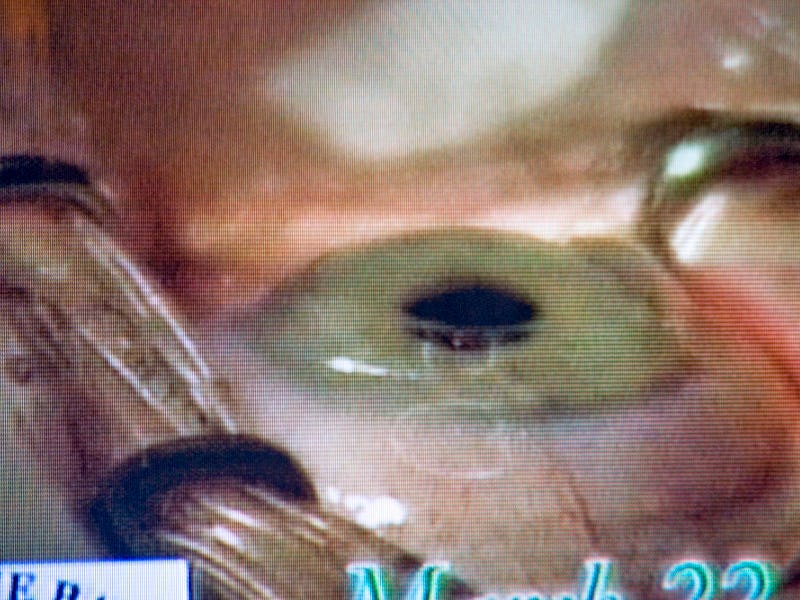6 Scientists Who Made Great Discoveries Experimenting on Themselves
Ethics dictates that a scientist should never subject another person to a treatment he would not undergo himself. These researchers took that advice literally.

For centuries, bold and curious scientists have used themselves as guinea pigs in the name of discovery. It was a common practice in the 19th and 20th centuries, especially in the fields of psychology and medicine, as doctors often considered themselves the most reliable witnesses to the effects of a certain drug or other regimen. These days, the practice has fallen out of favor, since a sample size of one falls far short of the standards of a double-blind trial.
But even today, researchers continue to experiment on themselves, sometimes because no ethics board would approve testing on another human, sometimes out of sheer curiosity, and sometimes out of desperation.
Here are six great moments in the history of science conducted on one’s self.
The first big trip.
The First Acid Trip
Chemist Albert Hofmann first synthesized lysergic acid diethylamide (LSD), but had no idea of its halluncinogenic powers until 1943, when he accidentally injested a small amount. Realizing his discovery, he did what any good scientist would do and began experimenting on himself. His first purposeful acid trip was on April 19, 1943, when he famously rode his bicycle home while under the influence of the drug.
“Now, little by little I could begin to enjoy the unprecedented colors and plays of shapes that persisted behind my closed eyes,” he wrote of the experience. “Kaleidoscopic, fantastic images surged in on me, alternating, variegated, opening and then closing themselves in circles and spirals, exploding in colored fountains, rearranging and hybridizing themselves in constant flux. It was particularly remarkable how every acoustic perception, such as the sound of a door handle or a passing automobile, became transformed into optical perceptions. Every sound generated a vividly changing image, with its own consistent form and color.”
The Alcoholism Miracle Pill
Olivier Ameisen was a brilliant cardiologist until alcoholism took over his life. None of the available treatments were enough to keep him away from the bottle. It was out of desperation that he took an unconventional tack — experimenting on himself with baclofen, a muscle relaxant that had shown promising results in tests on addicted lab animals. Ameisen upped his dose gradually until he reached a level where his alcohol cravings simply evaporated. He tells the tale in his 2009 book, Heal Thyself.
The face of testicular fortitude.
Ball-Crushingly Strong Anesthesia
In 1898 German surgeon August Bier figured out that a dose of cocaine injected into the spinal fluid could serve as an effective anesthesia. In order to prove it out, he had an assistant, Augustus Hildebrandt, attempt to inject him with the drug. But Hildebrandt messed up, and Bier ended up leaking spinal fluid out of a hole is his neck. Rather than abandon the experiment, the two men switched places and Bier injected Hildebrandt with the cocaine. He proceeded to stab, hammer, and burn his assistant, pulling pubic hair and crushing his testicles. The pair subsequently went out for a boozy dinner, perhaps in an effort to forget that day’s traumatic events.
Effortless Weight Loss
Neuroscientist Michael Graziano recently reported on a weight-loss experiment he performed on himself. The goal was to lose weight without effort. The theory is that, when we deprive ourselves of food through dieting, we elevate our hunger mood, which causes us to eventually give into cravings and eat more than we might have otherwise. Graziano proceeded by avoiding foods that crank up our hunger mood (carbs), welcoming foods that make us feel satiated (fats), and allowing himself to eat until he was full at each meal. The result? Fifty pounds shed over eight months, all without engaging in a battle of willpower.
The Parasitic Allergy Cure
What would it take for you to willingly put parasitic hookworms against your skin, so that they can burrow through your skin, live in your intestines, and feed off your blood? Immunologist-biologist David Pritchard did just that in 2004, all in the name of science. He had a hypothesis that hookworm infections reduce allergy and asthma symptoms, and needed to test on human subjects. He agreed to be the guinea pig, in order to appease his ethics committee. The experiment later allowed for wider testing on humans, who reported miraculous relief of allergy symptoms.
Self surgery is not for the faint of abdomen.
The Coke-Fueled Operation
On 15 February 1921, American surgeon Evan O’Neill Kane was lying on an operating table waiting to have his appendix removed. Suddenly, he had an idea for an experiment: Could he complete the operation on himself? He ordered the doctors and nurses to back off, injected the wall of his abdomen with cocaine and adrenaline, cut himself open and removed the appendix. It took half an hour, and the only mishap was when his intestines popped out from inside him when he leaned too far forward. He recovered quickly.